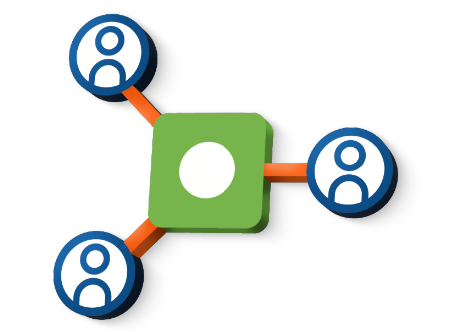market-news
Click on the online help, the answer is all robots, is this really good?
Editor's note: The development of artificial intelligence technology is
constantly changing the way people live and work. It promotes the
development and progress of society to a certain extent. This is beyond
doubt. But artificial intelligence is not omnipotent, because machines
do not have human thinking and emotions. When you open the online help
window on the website and find that you are only a cold robot, you
should be disappointed.
In April 2016, Mark Zuckerberg described a
bright future for developers on Messenger at Facebook's F8 conference
and announced that it would enter a new era of “talking to robots like
friends”. Developers around the world, all of whom have certifications
from big companies like Facebook, Google, and Microsoft, all claim that
the era of independent mobile apps is over, and together celebrate new
ways of coming - Conversational Commerce and Chatbots. 11 months ago,
Facebook announced that its officially developed chat robot "M" beta
test AI failure rate of 70%, then updated its platform, and recommended
developers to develop more lightweight applications in Messenger, Also
disable session input.
Regarding Wordhop.io, we have always known
two things. The first thing is that AI is really hard, and it takes
many years for the robot to communicate with humans 100% like a friend.
After all, robots don't resonate like people. Second, Facebook consumers
don't send messages to a business because they want to shop or be
interested in the weather. These experiences are premised on having a
chat bot, and they also need to support industry data that has expanded
from information delivery to social networking.
What Facebook users really want is to get a quick response from a business when there is a problem.
The
main reason consumers send messages to businesses on Facebook is to get
services. Everything else is a cloud. Such interactive pre-sales may
begin with the customer's questioning, and timely responses can advance
the transaction. If the customer contacts the sales customer service, it
is usually because they really have problems to ask customer service.
Some answers can be answered by the robot, and more complex problems can
be solved by people. In the case of powerful tools, the speed of human
recovery can be comparable to that of robots.
However, many bot
developers don't focus on the most demanding part, but seek to create
new user experiences or re-develop old concepts about chatbot. If robot
developers feel that the participation rate is low, this may not be
because AI has failed, but because they lead consumers to the road that
they don't want to go at the beginning. Instead of leveraging existing
consumer behavior patterns and not training robots to respond to
customer needs, AI's role is simply to realize the creative experience
that robot developers imagine and to guide consumers through the
experience.
Facebook now recommends that robot developers completely disable session input.
I
personally don't think that disabling chat input as suggested by
Facebook is the right solution for the technical limitations of AI and
NLP. Communication robots without dialogue capabilities are acceptable
for news robots, where the experience is driven by notifications and
content consumption. However, if it is a service-based business, you
need to provide a platform for users to interact with you. If text input
is the main way of Messenger, it will limit the customer's willingness
and initiative to communicate, and force them to seek other ways of
customer service that you can imagine, or just delay the response will
make customers more disappointed. Think about IVR, every time you listen
to the menu options, you have to press "0".
The business community should adopt a combination of automatic and manual, in order to meet the needs of Facebook users.
China's
WeChat small program is integrated into the message interaction, which
satisfies the developer's expectation of the chat bot, but this is a
cultural phenomenon in the East, and Western companies should first use
the existing consumer behavior and be better. Use such behavior data. If
you are not a fan of the concept of "chasing robots will replace manual
services", just stick to the promise of customers at the beginning of
the opening, then the introduction of such technology can help you
strengthen communication with customers. If you can meet the
expectations of today's Facebook consumers, then over time, you can add
new features and lead consumers in the direction you are looking for. In
the end you are likely to meet their needs.
Disclaimers: The content of this article is personal opinions and thoughts, and should not be construed as containing personal and/or other investment advice and/or proposals and/or invitations Please engage in any financial instrument trading and/or guarantee and/or predict future performance. FXTM Corporation and its network partners, agents, directors, managers, or employees do not guarantee the accuracy, validity, timeliness, or completeness of any information or data, and do not acknowledge any losses caused by investments based on the above information.
Article address:https://www.easymarketscn.com/en/xinwenzixun/49.html
CATEGORIES
market-news
- Click on the online help, the answer is all robots, is this really good?
- Tencent's game revenue declined for two consecutive quarters, and payment, cloud
- Passing drops will soon be connected to ofo, sharing bicycle wars or changing
- After earning two years of fast money with the netizen's general trend, Koala En
- The scale of the US industry information will be available, and the door managem
- The tourism market will usher in a content bonus? Hippo Residence wants to be a







